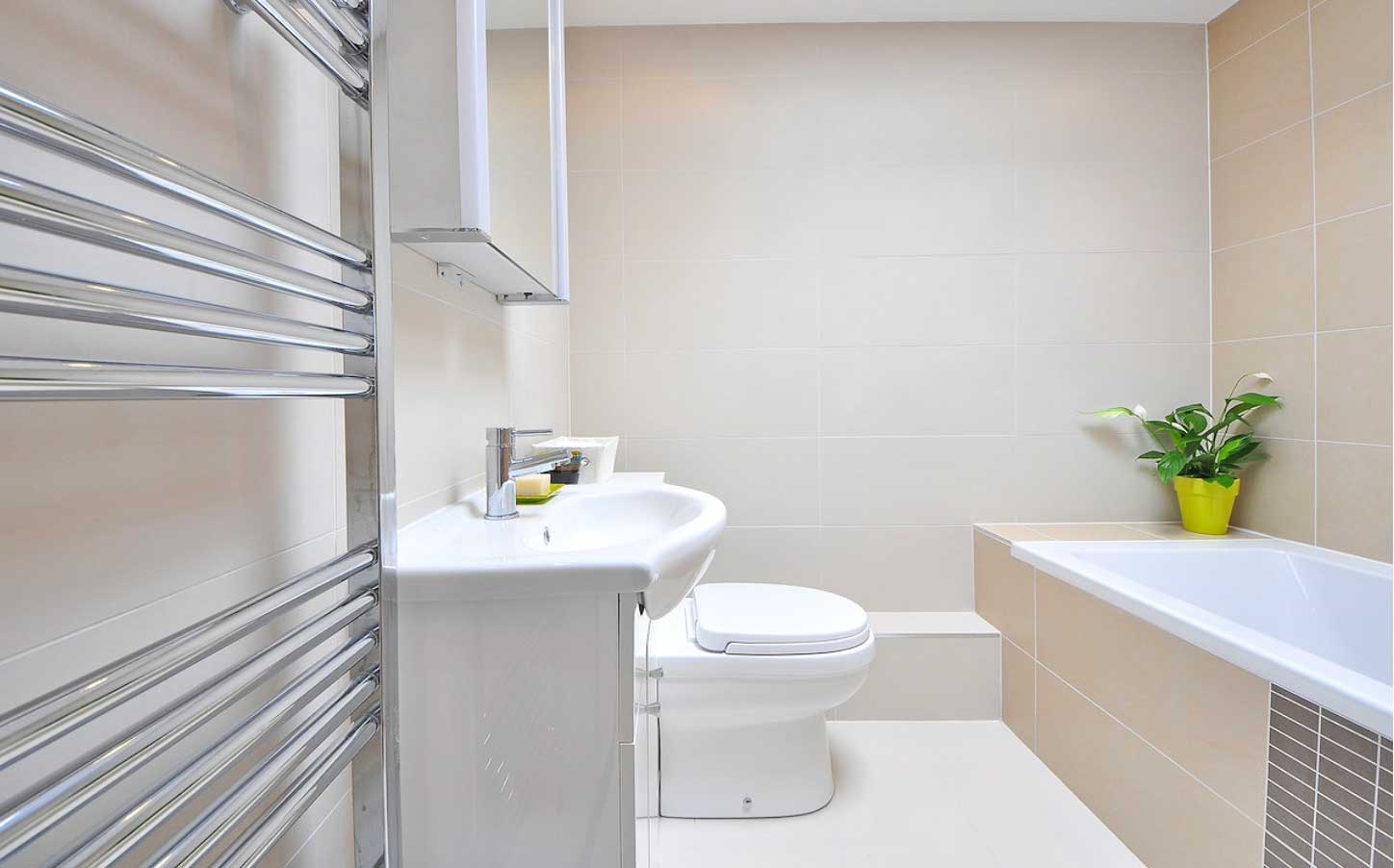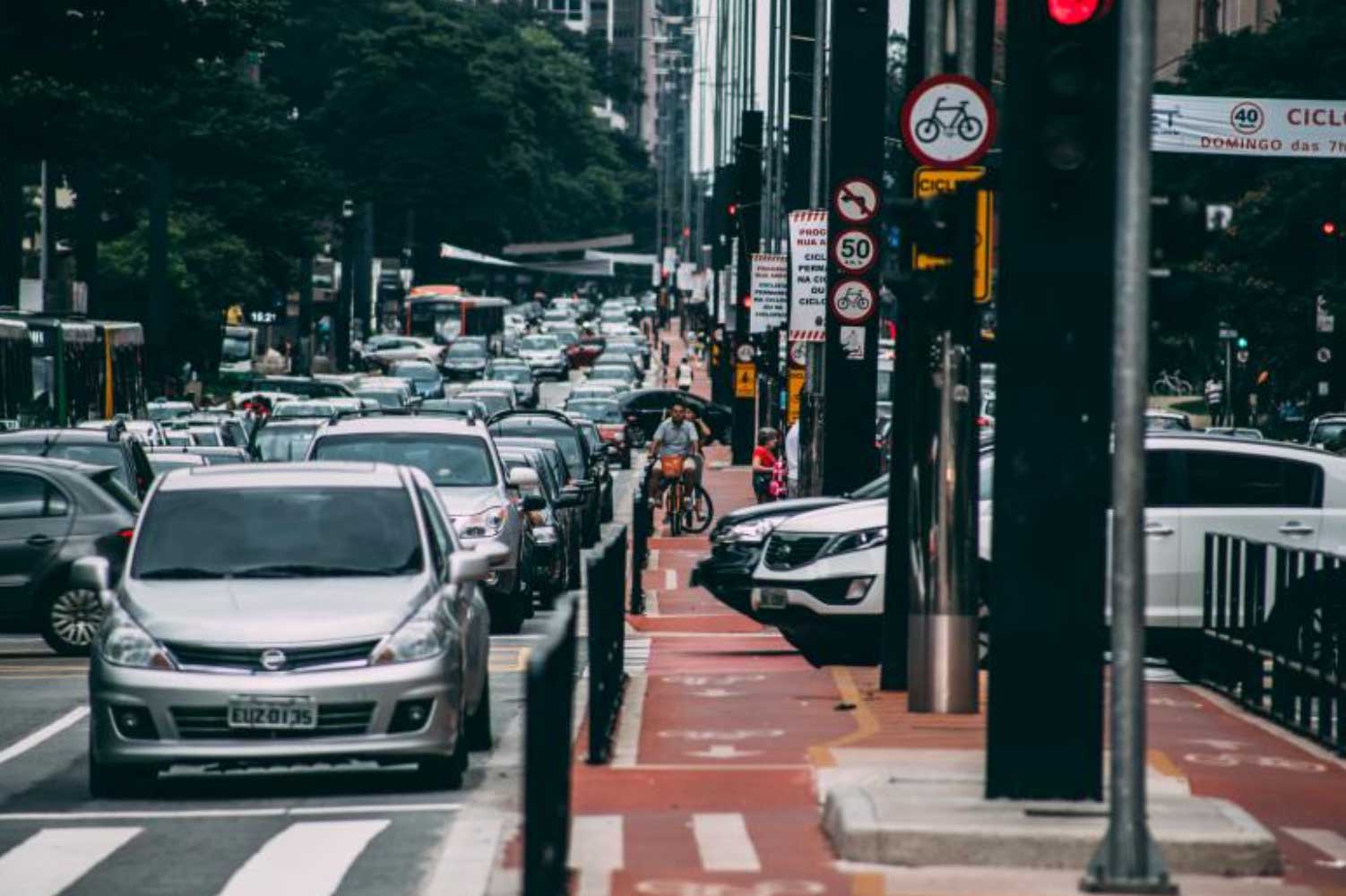If your carbon footprint was visible, you would notice the very floor beneath you overrun by carbon-emitting tracks. You would probably be able to retrace your every step, all the way back to when you got out of bed this morning. You might notice your carbon tracks clustered around your kitchen garbage bin, which you frequently visit, and you might notice they’ve formed a dense mat across your washroom floor, in the same way that steam fogs up a mirror when someone really ought to have gotten out of the shower by now. If your carbon footprint was visible, it would be a frightening sight.
Maybe your carbon footprint really is visible, though. Maybe it’s visible when you struggle to stay on your feet upon seeing your electric bill, or when you begin to wonder if your garbage bins are shrinking.
Whatever your reasons may be for trying to reduce your carbon footprint, the important thing to keep in mind is that there are opportunities to lower your carbon emissions in every aspect of your day-to-day, whether you’re at home, work, or someplace else. Here are a few examples of places and situations in which you can lower your carbon footprint:
In the kitchen

- Know the difference between best-before and expiry dates
- Store fruits and vegetables correctly
- Compost your coffee grounds
Know the difference between best-before and expiry dates
People commonly misinterpret best-before and expiry dates as being the same. Simply put, an expiration date is the last day that a product is safe to consume, whereas a best-before date marks the day on which a product’s freshness or quality will begin to decline. If you would like to know how long after best-before dates it’s safe to consume certain products, check out this article.
Store fruits and vegetables correctly
Do you often find your fruits and veggies getting rotten unreasonably fast? Fruits and vegetables are among the most commonly discarded foods in households, making them a terribly great contributor to our carbon footprints. One of the main reasons why fruits and vegetables are thrown away so often is because they prematurely expire or lose freshness due to not being stored correctly.
Just like children, certain fruits and vegetables don’t get along and therefore must be separated. Apples, for example, are big bullies: they release a pungent odor that foods like carrots and cabbages are especially susceptible to, causing them to deteriorate at a far faster rate. Take a look at this article to see how else you’ve been subjecting your fruits and vegetables to unsatisfactory living conditions.
Make sure that you store your fruits and vegetables correctly in order to reduce how much food you throw out. More importantly, however, don’t neglect your fruits and veggies: make sure that they have a safe space to flourish before the time comes for you to devour them.
Compost your coffee grounds
You drink coffee. Since you drink coffee, you have a really good opportunity to offset your carbon footprint by composting your coffee grounds! Coffee grounds can go in your compost bin; that little bin that you maybe sometimes forget about because it’s so little.
Composting coffee grounds takes no longer than dumping them in a garbage bin or washing them down a drain, so consider doing it.
If you’ve got some plant pots laying around, you could even blend your coffee grounds into the soil, as coffee grounds contain nutrients that promote plant growth! Don’t just dump the coffee grounds into your plant pots and call it a day, though: do some research to learn which plants actually benefit from coffee grounds as well as how to properly blend coffee grounds into soil so that you don’t end up ruining your plants.
In the washroom

- Take shorter or colder showers
- Don’t leave the tap running
- Ditch or reuse single-use products
Take shorter or colder showers
Taking short, cold showers is a chilling prospect, which is why this point is titled “take shorter or colder showers,” rather than “take shorter and colder showers”: doing one or the other is far less torturous.
It goes without saying that using less water is more energy-efficient. What you may not know, though, is just how energy-demanding running hot water is. According to Natural Resources Canada, water heating—whether it be for taps, showers, or some other appliance—accounts for around 17% of all energy used in the average Canadian household.
If you aren’t willing to give up warm showers altogether, try to incorporate short or cold showers each week. For example, you could take cold showers after an exercise session, especially if you already took a shower earlier that day.
Cold showers can help reduce muscle soreness, among other things, and thus are a great option after an intense workout session. To avoid shocking your body with freezing cold water, start the shower at lukewarm temperature and then slowly adjust the temperature to make it cooler.
Don’t leave the tap running
This one is super easy. If you’re in the middle of brushing your teeth, don’t leave the tap running. If you’re in the middle of shaving, don’t leave the tap running. If you’re doing your daily skincare routine, don’t leave the tap running. Don’t just leave the tap running because you’ll need the water in about 15 seconds: only run the tap when you are actively using water. That’s it. Easy.
Ditch or reuse single-use products
Individuals who endeavour to lead a more sustainable lifestyle often struggle to make certain aspects of their life eco-friendly due to things that are out of their control: the prevalence of single-use products are one of the biggest hurdles in this regard. While many companies are making the shift from single-use products to recyclable items and packaging, some still have some catching up to do, meaning that people who want to lessen their carbon footprint have to seek out sustainable products.
When buying toiletries such as shampoo and toothpaste, look for items that can be recycled or that have recyclable packaging (or both, ideally).
If you have some single-use bottles and containers lying around, consider reusing them to reduce your waste. For example, you can clean and fill up spray bottles with water to conveniently wet your hair when styling; a much better alternative to running soaking wet hands through your hair or dunking your head under a tap. You can even store your homemade skincare concoctions in containers, such as those that typically contain moisturizers and styling creams.
In the living room

- Bundle up instead of turning the thermostat up
- Turn off the lights when you leave the room
- Buy sustainable light bulbs
Bundle up instead of turning the thermostat up
You’re sitting on your couch watching TV, and you aren’t having a good time. You would be under normal circumstances, but this isn’t a normal circumstance because you live in Canada and it’s snowing even though it’s March. You’re freezing, and to make it worse, you’re freezing during a time of the year when you shouldn’t be freezing. You’re freezing and you’re annoyed.
You shoot up from your couch and storm over to the thermostat, but just as you’re about to turn the heat up, you remember something. A minute or two later, you return to your couch with a warm blanket and a cup of hot chocolate, and you think to yourself, how silly of me, nearly turning the thermostat up instead of grabbing a blanket. It’s a good thing I remembered that there are alternatives to protecting oneself from the elements that don’t involve increasing my electric bill and putting myself in a financial crisis!
Turn off the lights when you leave the room
While lights don’t contribute nearly as much to electric bills as heating and cooling do, you can certainly save some money and lower your carbon emissions by turning off lights when you leave a room.
In some cases, you may not need to turn on lights at all: living rooms, for example, often have bigger windows and receive a lot of natural lighting. Think about what lights you regularly use in your residence, and consider if all of them are necessary, or if natural lighting or lights pouring in from nearby spaces may suffice in some rooms.
Buy sustainable light bulbs
Swapping out your incandescent and compact fluorescent light bulbs for sustainable light bulbs is a quick and affordable method of diminishing your carbon footprint. If you’ve still got energy-guzzling bulbs, it’s past time to update them.
LED bulbs are simply superior to other light bulbs. In addition to using the least amount of energy, LED bulbs generally have the longest lifespan, so you really can’t go wrong with them.
In the bedroom

Refer to, “In the living room.”
At work

- Avoid printing
- Bring lunch to work or walk/cycle to a nearby restaurant
- Work from home
Avoid printing
In the age of digitalization, creating physical documents is becoming a rare practice. While your company may have already made the shift to digital documents, it’s unlikely that physical documents are wholly absent within your workplace.
Look at the aspects of your workplace where physical documents are still required and think about whether they really are required in these aspects. If there are facets of your workplace where you believe printing can be avoided, you could try voicing this opinion to your boss. If you are the boss, you can skip the voicing your opinion part and just go ahead and make the change, since you’re the boss and no one can tell you otherwise, unless they want to get the boot.
If printing really can’t be avoided, consider printing documents as double-sided rather than single-sided. Believe it or not, printing double-sided lowers your paper use by roughly 50%!
Bring lunch to work or walk/cycle to a nearby restaurant
Eating out is one of humanity’s favourite luxuries, so bringing your own lunch to work rather than grabbing a sandwich and overpriced coffee during your lunch break may sound preposterous, but these are the sorts of sacrifices you’ll need to make if you really want to stick it to your carbon footprint.
Alternatively, you could try walking or cycling to nearby restaurants on your break instead of driving to one. This would be a great opportunity to slow down and discover some local joints as well.
Work from home
Long commutes to work are a significant source of carbon emissions and, until quite recently, an unavoidable one. Since the normalization of working remotely due to COVID-19, many employers allow their employees to work from home on occasion. If possible, try incorporating some remote workdays each week to lessen your carbon emissions from driving to work.
Speaking of driving to work…
When travelling to work

- Take public transportation
- Carpool
- Bike to work
Take public transportation
Driving to work is one of the biggest contributors to many people’s carbon footprints, so consider taking public transportation if working remotely isn’t an option.
Carpool
If you aren’t keen on taking public transportation, try to organize carpools with co-workers. Carpooling with just one other person can reduce carbon emissions by 50% (as you could have probably guessed), and you also get the opportunity to gossip, every office worker’s favourite pastime!
Another option would be to carpool with family members. Even if you don’t work together, you may find similarities in your commutes, such as when you leave and what direction you travel in when heading to work. For instance, a family member can drop you off close to your workplace on their way to work, leaving you to take public transportation the rest of the way.
Bike to work
While taking public transportation and carpooling are great lower carbon-emitting alternatives to driving yourself to work, biking is truly an environmentally friendly mode of transport. If you live close to your workplace, consider ditching your car and taking a bike.
Cycling to work is, of course, a sure-fire way of drastically lessening your carbon footprint. Furthermore, you’ll reap a plethora of health benefits if you regularly cycle to work: just make sure to pack some deodorant.
Before you walk out the door, however, there’s a few things you ought to do:
Before leaving to go to work

- Adjust the thermostat
- Unplug electronics that are not in use
- Turn off lights around the house
Adjust the thermostat
Air conditioning and heating use the most electricity in our homes—nearly half of our energy goes to heating and cooling. If you really want to put a huge dent in your carbon footprint, changing how you use your thermostat would definitely be the way to go about it!
Using your thermostat in a more energy-efficient way doesn’t mean subjecting yourself to blistering heat or numbing cold. Many energy companies recommend adjusting your thermostat by a mere few degrees when you are away from your home. Before you leave to go to work, raise the temperature on the thermostat by a few degrees during the summer, and lower it by a few degrees during the winter.
You can also greatly reduce your electric bills by lowering your thermostat before going to sleep. If you get cold, grab another blanket; if you get warm, ditch blankets altogether.
If you want to go even further, you could set your thermostat lower or higher than usual for an entire day. Compensate for cooler temperature by dressing warmer or throwing a blanket over yourself, and compensate for warmer temperature by losing some layers of clothing—as many as you (and your household members) are comfortable with.
Rather than constantly having to adjust your thermostat throughout the day, you can invest in a programmable thermostat, which will automatically adjust the temperature according to a pre-set schedule.
Unplug electronics that are not in use
Unplugging devices and appliances before you leave to go to work—or anywhere, even—is another one of the easier ways to lower your carbon emissions while also saving money. Contrary to popular belief, electronics don’t “lose” energy when they aren’t plugged into a socket. Many electronics do, however, drain energy when plugged in, even if they are turned off. The electricity sucked up by devices and appliances during this vampiric process is known as a phantom load. Phantom loads are responsible for unnecessary and easily avoidable expenses: by simply unplugging computers, microwaves, and other electronics, you can save upwards of $100 each year!
Turn off lights around the house
Before you head out the door, make a mad dash around your house and turn off all the lights you may have left on. You’re not home, so there’s really no point in leaving them on.
Some people, however, like to leave one light on in the foyer or near the front entrance to either deter burglars (because burglars are terrified of lights) or so that when they return from work, they don’t open their doors to a scary black abyss. Unless you have an actual reason to leave a light or two on, take the extra few seconds to turn off all your lights.
When going on vacation

Maybe don’t go on vacation. Or consider going somewhere close so that you don’t have to fly there. If you really, really, want to fly to someplace nice, such as the sweeping fjords of Norway or the cobblestone streets of Rome, nobody can stop you, and you probably deserve a nice getaway anyways.
Being on vacation, however, doesn’t give you an excuse to temporarily halt your quest to vanquish your carbon footprint. Continue as many of your environmentally friendly practices as possible, such as turning off the lights before you leave your hotel or Airbnb and taking shorter or colder showers.
Takeaway
Reducing your carbon footprint and living a more eco-friendly life doesn’t mean you have to make drastic lifestyle changes. Actions as little as switching out your lightbulbs for energy-efficient ones often make a big impact, so don’t feel pressured to make major, jarring changes to the way you live your life in an attempt to be more sustainable.
It’s also important to note that many of the points listed in this post overlap with other settings and scenarios: for example, you can try taking public transportation in general, not exclusively when going to work.
Take a moment to examine every aspect of your life—your homelife, workplace, shopping habits, and so on—and think about ways you can lessen your carbon footprint. You could set some sustainability goals, like taking shorter showers, and you can even measure your success by observing the differences in your electric bills, as well as using other methods of tracking progress.
Good luck on your journey to reducing your carbon footprint!
Words by: Liam Basi





